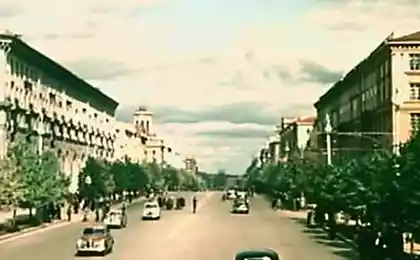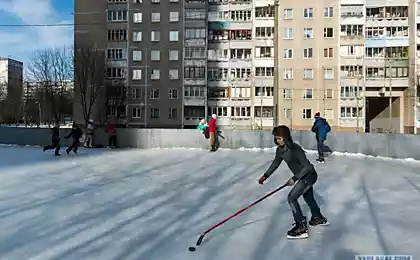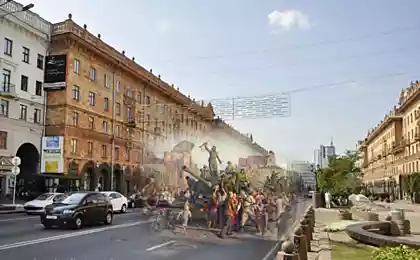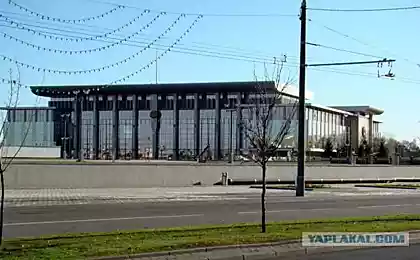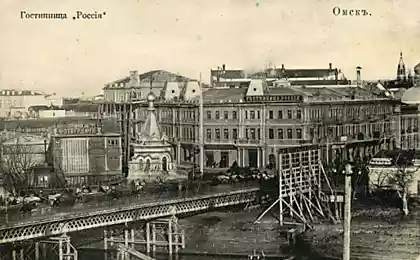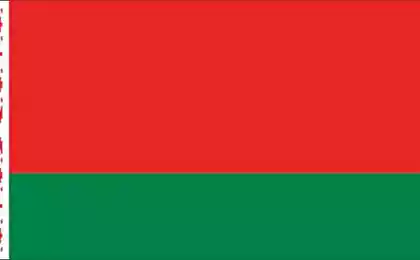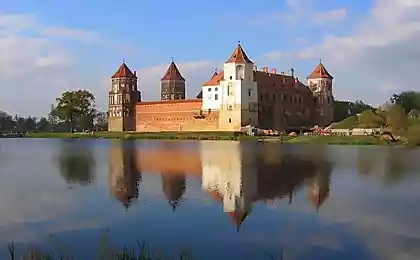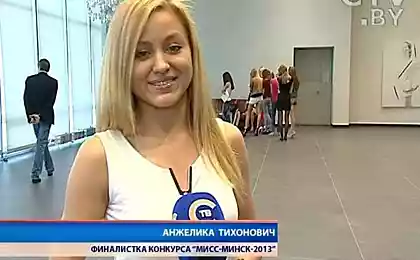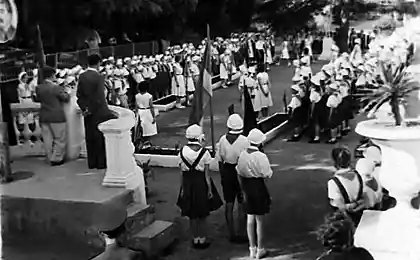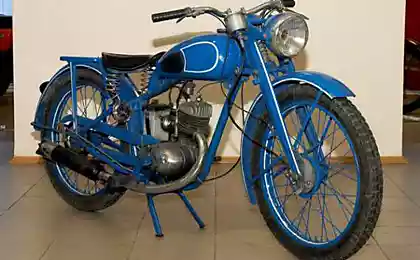2396
Minsk in the 70s (20 photos)
Minsk (Belarus. Mіnsk, until 1939 - Mensk) - the capital of Belarus, the administrative center of Minsk region (not included in its composition) and Minsk district (not included in its composition), Hero City. A major transport hub, political, economic, cultural and scientific center of the country.
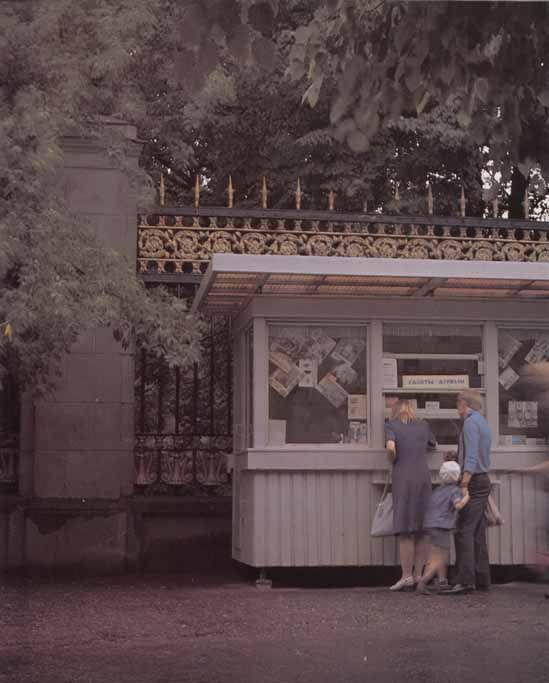
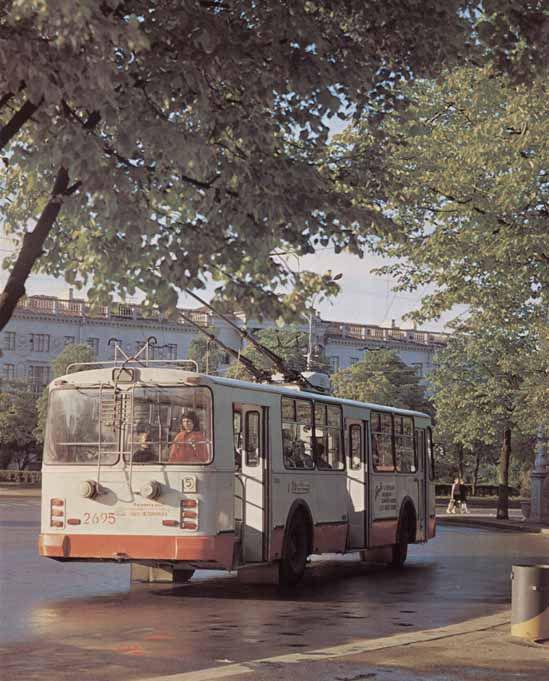
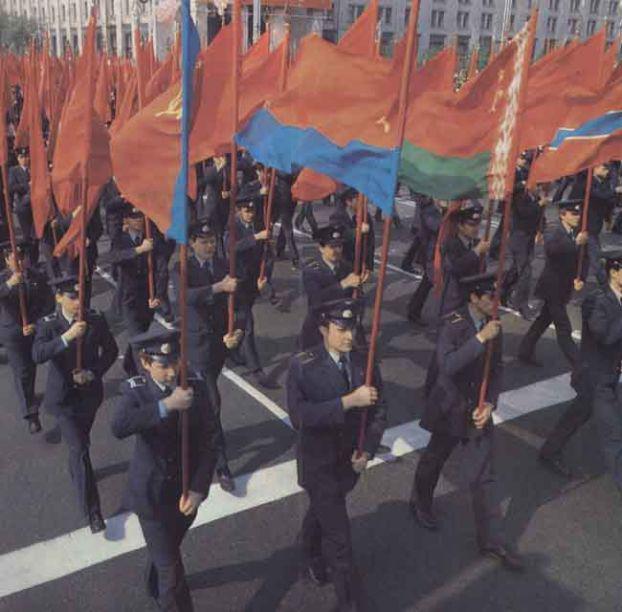
The Economy. Gross industrial output in 1972 increased by 46 times against 1940. Minsk gives 1/4 (1972), the total industrial output of Belarus; everything in it is concentrated the production of tractors, radios, televisions, watches, cameras, motorcycles, bicycles, refrigerators, power transformers, gypsum products, more than 80% wool fabrics, 48% of bearings, 34% of leather shoes Belarus. Power base is the largest thermal power station associated with the Belarusian energy. Since 1960 Minsk receives gas from Dashava (USSR). Leading industry - machinery and metalworking (58% of industrial output of the city, 1972); among the enterprises of the industry stand out plants: Tractor (see. MTZ), automotive (see. The Minsk Automobile Plant), motor, 2 machine-tool plant of automatic lines, bearing, refrigerators, electrical, heating equipment, electronic computers, spring, Tool plant "Drummer" (trucks, snow plows, etc..).
Minsk airport
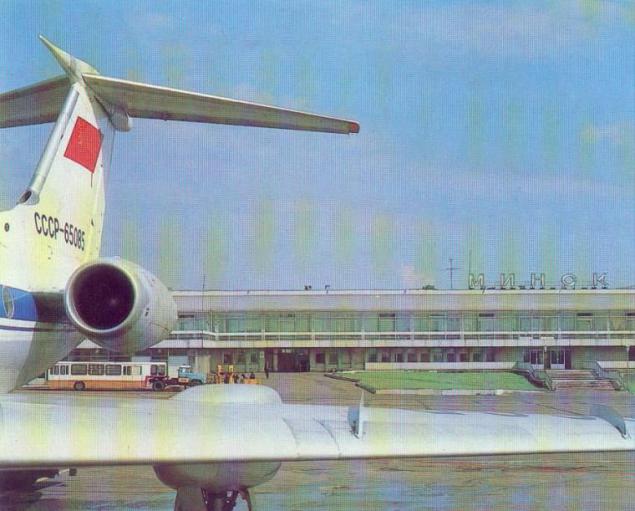
Flying over the new buildings
Minsk - a significant center of light industry (22% of the city's industrial output, 1972); in the postwar years has grown a new branch of the textile industry - wool. Major companies: fine-and worsted mills, tanneries, textile factory, a number of sewing and other businesses. By the specific gravity (11, 8%) in the city's industrial output occupies a prominent place as the food industry, provided meat, mill, dairy plants, confectionery, tobacco factories, breweries, margarine, bakery and others. Significant development has industry of building materials (gypsum and plants porcelain, 2 plant construction, building materials factories and large-block Stroydetal), chemical (plant medicines, endocrine products, paints and varnishes, furniture and others. In Minsk there are more than 1/2 of the printing industry BSSR (House, Printing Plant).
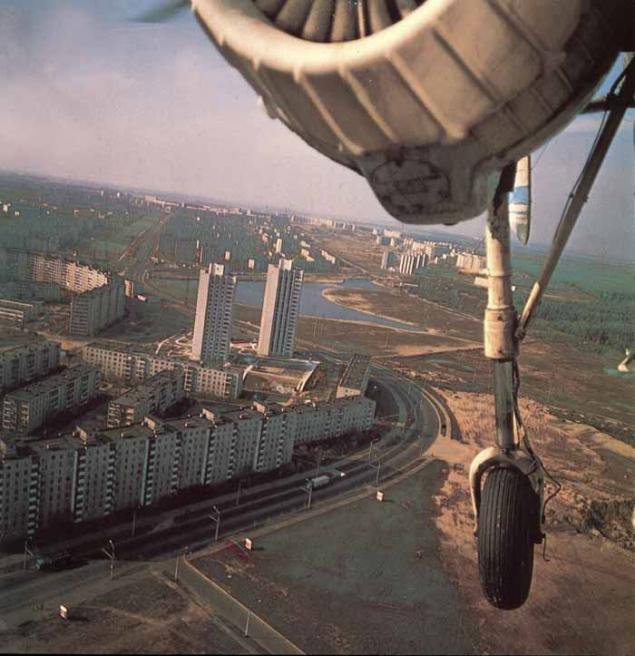
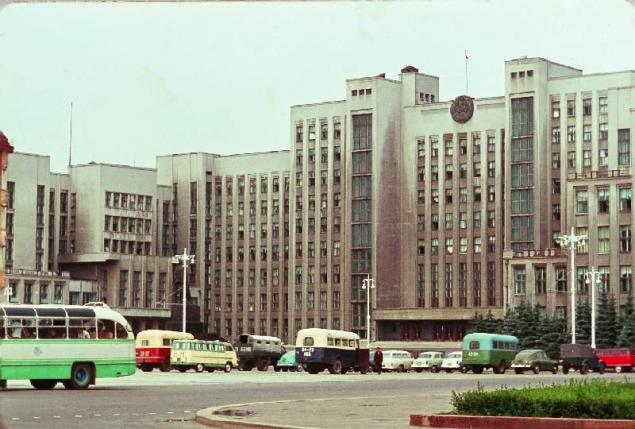
Minsk - a major transport hub. Minsk depart from railroad lines to Moscow, Brest, Gomel, Vilnius. Through Minsk motorway Brest - Moscow. Airlines Minsk linked to many cities of the country. In 1972 the total area of the housing stock increased compared to 1940 by 9, 9 million. M2 (6, 5 times).
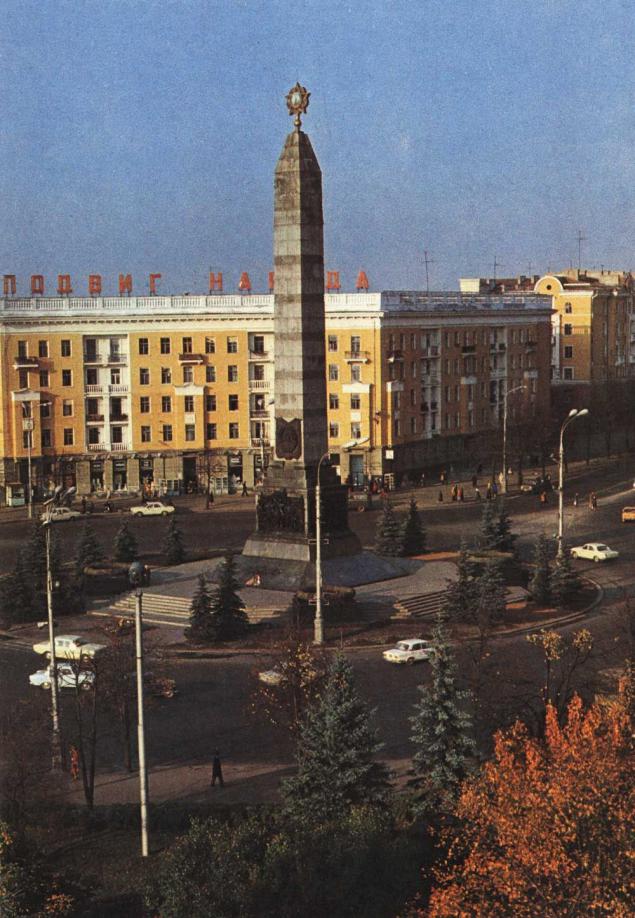
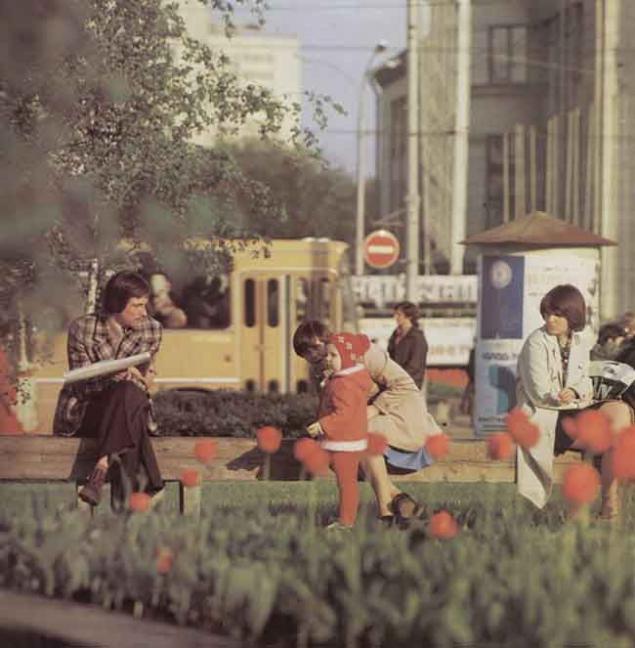
Architecture. Preserved Baroque monasteries (in Vol. H. Bernardine Bernardine - both 17 in.), And Paul (Catherine) Church (1622). Modern architectural appearance of Minsk was formed during the Soviet era, when it was carried out a radical reconstruction of the city. In the 1920-30s. built large complexes and individual buildings (Library them. Lenin, 1930-32, architect GL Lavrov, Government House BSSR 1930-33, the main building of the Belorussian Academy, 1935-1939, - both architect IG . Langbard inn "Belarus", 1938, architect AP Warrior), residential construction was carried out. During the Nazi occupation of housing Minsk was destroyed by 74%. In the postwar years, rehabilitation and reconstruction were carried out according to the general plan (project ended in 1946, architects N. Androsov Minsk, NE Trachtenberg et al., A master plan was refined in 1952, 1958, 1959, 1962, 1964), provides for the creation of a new social center, a clear functional separation of industrial areas and residential areas. In 1950-60-ies. create a new metropolitan community center (architects GP Badanov, Minsk A. Barch, SB Botkovsky, AP Warrior, VA King, SS Musinsky, Minsk P. sailboat, GV . Sysoev, NE Trachtenberg, N.-E. Spiegelman) ensembles Lenin Square, Central, Victory Kolas related Leninsky Prospekt. These squares and avenues are lined with high-rise residential, administrative and public buildings; among them - the building of the Central Committee of the Communist Party of Belarus (1940-41, completed in 1947, architects AP Voinov and VN VARAKSIN), State Bank (1950, architect P. Parusnikov Minsk), the General Post Office (1950-53, architect VA King). Created ensemble Railway Square (designed in 1947, architects BR Rubanenko, LS Golubovskii, AR Korabel'nikov). Since the mid-1950s. neighborhoods built in the new territories (the first in the streets of Volgograd and Orel) and the reconstructed areas (streets Faith Horuzhei, Chkalov, Apanski). After 1968, the center of Minsk is developing along the river. Svislach. Under the new master plan (1965, architects LG Gafo, EL Zaslavsky et al.) Are system-highways doubles Leninsky Prospekt and ring mains, built large residential areas: Chizhovka, Serebryanka East. Among the most significant buildings of the 1960s. - The building of the executive committee (1964, architects S. Musinsky, GV Sysoev), residential area on the street. Tolbukhina (1966, architects V. Shpit et al.), The Sports Palace (1966, architects SD Filimonov, VN Malyshev), a complex of Water Sports Palace (1965-69, architect OB Ladygina, Engineer IB Zybitsker), hotel "Jubilee" (1968, architects Minsk Benedictine et al.). Monuments to Lenin (bronze and granite, 1933, sculptor Minsk Manizer, architect IG Langbard), the obelisk monument to Soviet Army soldiers and partisans who fell in the Great Patriotic War of 1941-45 (Victory Monument, Granite 1954, architect G. Zaborsky, VA King, sculptors ZI Azgur, AO Bembel, AK Glebov, SI Selikhanov), Yakub Kolas (bronze, 1972, sculptor ZI Azgur) Yanka Kupala (bronze, 1972, sculptor A. Anikeichik et al.)
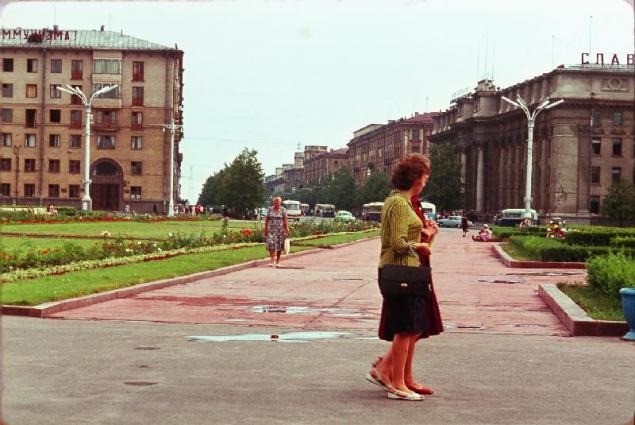
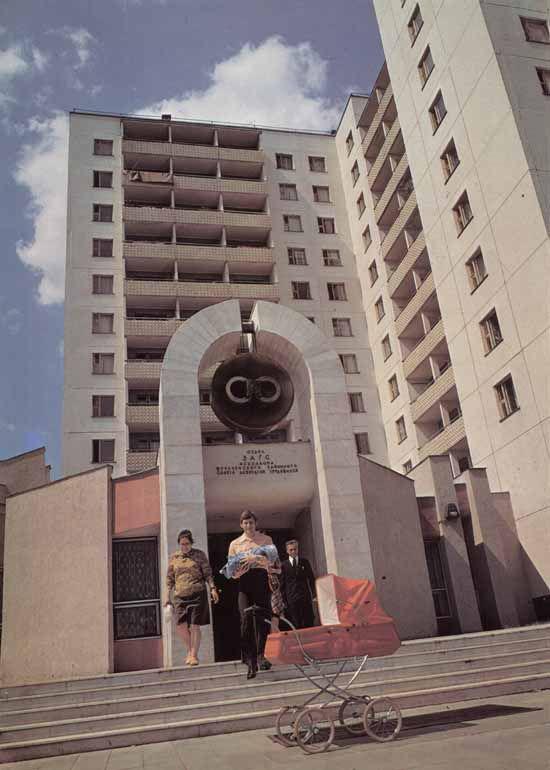
Cultural construction. According to the 1897 census, 50, 9% of the population was illiterate. In the 1913/14 school year, 62 schools (49 and 13 lower middle, 6 of them are male and 7 female grammar schools) were trained 5 thousand. Students. During the years of Soviet power Minsk became one of the cultural centers of the USSR. In 1973 there were 360 preschool institutions (67, 5 thousand. Children). In the 1972-73 school year, 171 secondary schools of all types 166 thousand. Students in 29 vocational-technical schools - 15 thousand. Students in 22 specialized secondary schools - 33 thousand. Students. In Minsk there are 13 universities, the largest of them: Belarusian State University, Polytechnic Institute, Institute of National Economy, the mechanization of agriculture, technology, theater and art, Conservatory, Pedagogical Institute, Medical University, Institute of Radio Engineering. In the 1972-73 academic year, universities were about 84 thousand. Students
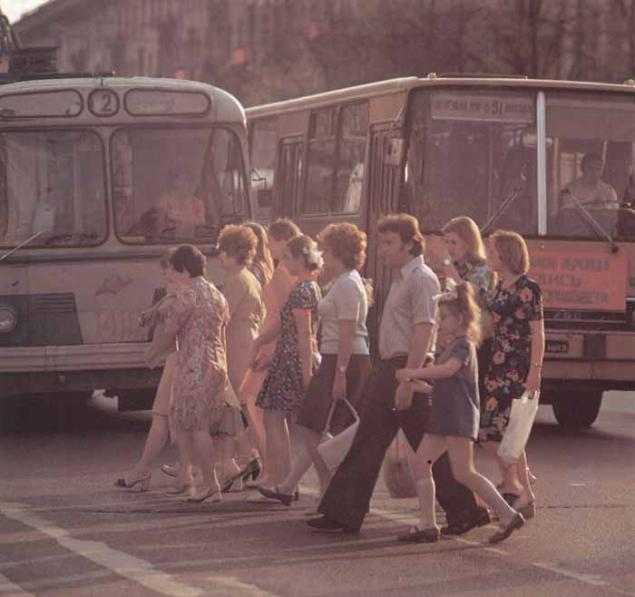
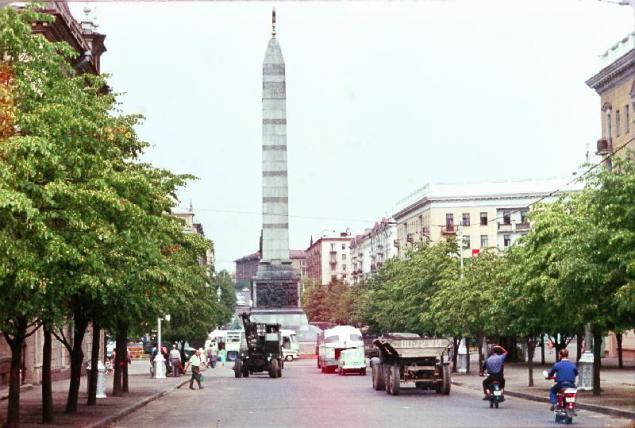
Jan. 1, 1973 employed 205 public libraries (4, 8 million. Books and journals), Republican Library - State Library of the BSSR them. Lenin (see. Art. Libraries Union republics). Government Library. Minsk Gorky, Fundamental Library of the Academy of Sciences of the BSSR them. Kolas, Republican Scientific Pedagogical Library, Republican Scientific Medical Library, the Republican scientific agricultural library; 8 museums - Museum of the Great Patriotic War, the house-museum of the 1st Party Congress, the State Museum of the Byelorussian SSR, Byelorussian SSR Art Museum, Zoological Museum, the Geological Museum, Museum of Literature, Kupala Literary Museum Kolas; theaters - Belarusian Academic Theatre. Kupala Byelorussian National Academic Bolshoi Opera and Ballet Theatre, Russian Drama Theatre. Minsk Gorky, Belarusian Republican Youth Theater, Musical Comedy Theatre, Puppet Theatre, Philharmonic Hall (which includes the State Symphony Orchestra, State Folk Orchestra, Chamber Orchestra), the State Academic Choir, the State Folk Choir, the State Dance Ensemble, the circus; 48 clubs, 70 cinemas; 3 House of Pioneers and other extracurricular institutions.

In Minsk - The Academy of Sciences of the Byelorussian SSR and the majority of its institutions, including institutions of mathematics, physics, solid state physics and semiconductors, heat and mass transfer, nuclear energy, technical cybernetics, physical and organic chemistry, general and inorganic chemistry, peat, geochemistry and geophysics Experimental Botany, photobiology and others. The problem of the social sciences academic institutions engaged in history, philosophy, law, economics, literature them. Kupala Linguistics. Kolas Institute of Party History of the CC CP Belarus. Significant contribution to the development of the national economy are making Minsk Research Institute of the Union and national sectoral agencies: Central Research Institute of Mechanization and Electrification of Agriculture nonchernozem zone Belarusian Research Institute of Land Reclamation and Water Resources, Belarus Research Institute for Soil Science and Agricultural Chemistry, Belarusian Research Institute of Geological Prospecting, Research Institute of Construction and Architecture, Belarusian Research Institute of Economics and Agriculture, and others. The scientific work is also conducted in the universities of the city.
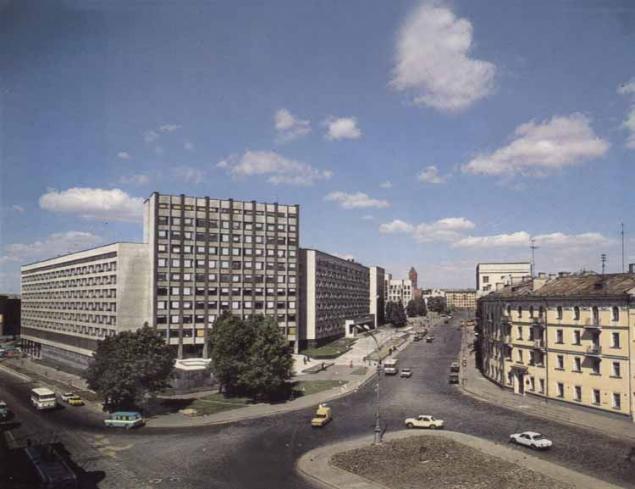
Run publishing house: "Belarus", "Fiction", "Science and Technology", "Public Education", "High School", "Harvest", the Belarusian University Publishing, Publisher CC CP Belarus, "Polymya." For the publication of the Belarusian Soviet Encyclopedia established (1967) Home Edition Byelorussian Soviet Encyclopedia.
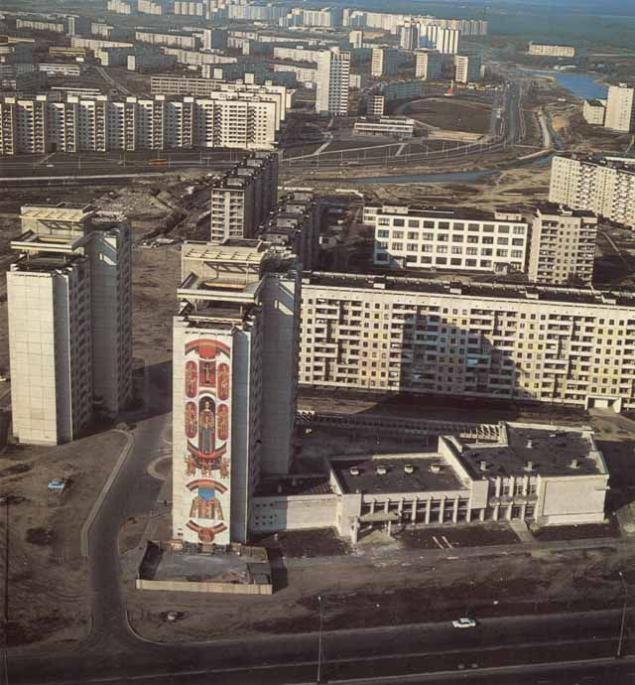
Published (1972) 119 journal publications, 11 national newspapers (see. Byelorussian SSR, section Press, radio, television), regional and municipal newspaper "Minskaya prauda" (1950), the city newspaper "Evening Minsk" (1967, in Belarusian and Russian).
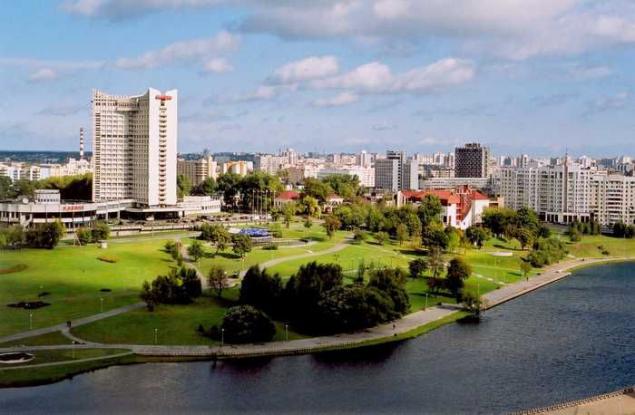
Minsk takes 1st All-Union radio program and "Lighthouse", reports the 1st Republican and 2nd mixed union-republican program (total volume 40, 5 hours per day, including 18 hours in the Belarusian language). Republican television transmission leads to 2 programs (total average daily volume of 25, 7 hours, 7 of 7 hours in the Belarusian language).
Railway Station Square
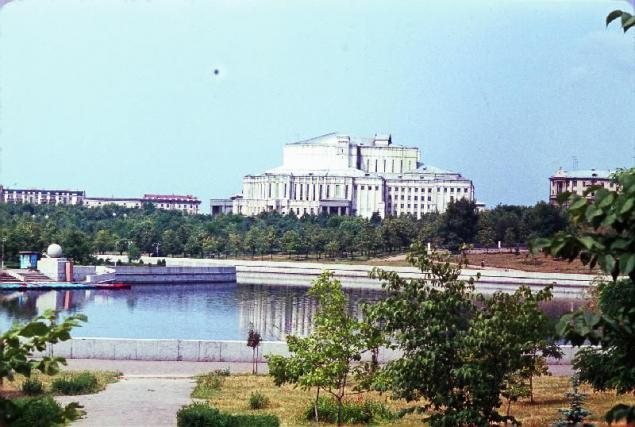
Health Care. In pre-revolutionary Minsk (1913) there were 23 hospitals with 835 beds; population served by 109 physicians. In late 1972 there were 20 hospitals with more than 10 thousand. Beds (more than 10 beds per 1 thousand. Residents, 20 hospitals with 3, 4 th. Of beds in 1940). Outpatient care was provided by 104 medical institutions (17 in 1940); It was also 14 sanitary-epidemiological stations (2 stations in 1940). Worked 6, 9 thousand. Doctors (1 doctor per 151 inhabitants) (1083 doctor so. E. 1 doctor per 250 inhabitants in 1940). 12 km from Minsk - Zhdanovichi resort sanatorium and mineral springs.
Urban contrasts
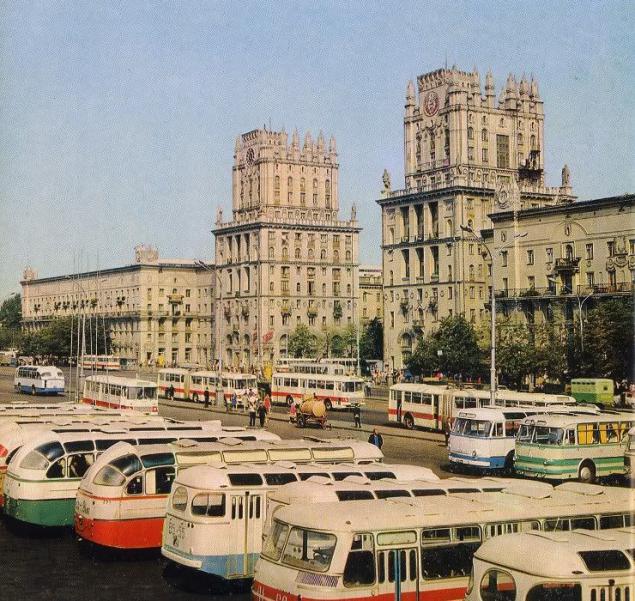
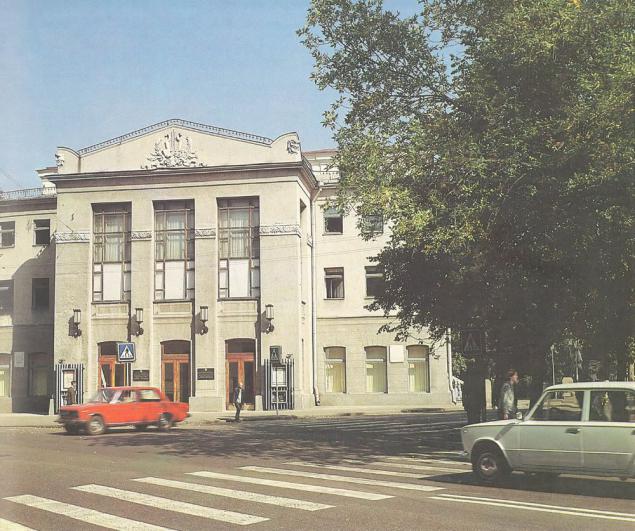
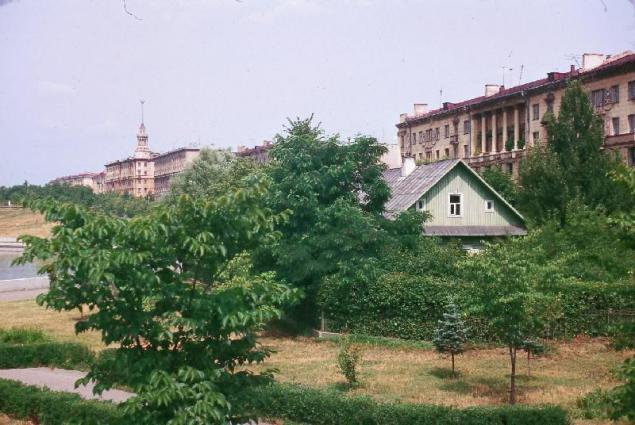



The Economy. Gross industrial output in 1972 increased by 46 times against 1940. Minsk gives 1/4 (1972), the total industrial output of Belarus; everything in it is concentrated the production of tractors, radios, televisions, watches, cameras, motorcycles, bicycles, refrigerators, power transformers, gypsum products, more than 80% wool fabrics, 48% of bearings, 34% of leather shoes Belarus. Power base is the largest thermal power station associated with the Belarusian energy. Since 1960 Minsk receives gas from Dashava (USSR). Leading industry - machinery and metalworking (58% of industrial output of the city, 1972); among the enterprises of the industry stand out plants: Tractor (see. MTZ), automotive (see. The Minsk Automobile Plant), motor, 2 machine-tool plant of automatic lines, bearing, refrigerators, electrical, heating equipment, electronic computers, spring, Tool plant "Drummer" (trucks, snow plows, etc..).
Minsk airport

Flying over the new buildings
Minsk - a significant center of light industry (22% of the city's industrial output, 1972); in the postwar years has grown a new branch of the textile industry - wool. Major companies: fine-and worsted mills, tanneries, textile factory, a number of sewing and other businesses. By the specific gravity (11, 8%) in the city's industrial output occupies a prominent place as the food industry, provided meat, mill, dairy plants, confectionery, tobacco factories, breweries, margarine, bakery and others. Significant development has industry of building materials (gypsum and plants porcelain, 2 plant construction, building materials factories and large-block Stroydetal), chemical (plant medicines, endocrine products, paints and varnishes, furniture and others. In Minsk there are more than 1/2 of the printing industry BSSR (House, Printing Plant).


Minsk - a major transport hub. Minsk depart from railroad lines to Moscow, Brest, Gomel, Vilnius. Through Minsk motorway Brest - Moscow. Airlines Minsk linked to many cities of the country. In 1972 the total area of the housing stock increased compared to 1940 by 9, 9 million. M2 (6, 5 times).


Architecture. Preserved Baroque monasteries (in Vol. H. Bernardine Bernardine - both 17 in.), And Paul (Catherine) Church (1622). Modern architectural appearance of Minsk was formed during the Soviet era, when it was carried out a radical reconstruction of the city. In the 1920-30s. built large complexes and individual buildings (Library them. Lenin, 1930-32, architect GL Lavrov, Government House BSSR 1930-33, the main building of the Belorussian Academy, 1935-1939, - both architect IG . Langbard inn "Belarus", 1938, architect AP Warrior), residential construction was carried out. During the Nazi occupation of housing Minsk was destroyed by 74%. In the postwar years, rehabilitation and reconstruction were carried out according to the general plan (project ended in 1946, architects N. Androsov Minsk, NE Trachtenberg et al., A master plan was refined in 1952, 1958, 1959, 1962, 1964), provides for the creation of a new social center, a clear functional separation of industrial areas and residential areas. In 1950-60-ies. create a new metropolitan community center (architects GP Badanov, Minsk A. Barch, SB Botkovsky, AP Warrior, VA King, SS Musinsky, Minsk P. sailboat, GV . Sysoev, NE Trachtenberg, N.-E. Spiegelman) ensembles Lenin Square, Central, Victory Kolas related Leninsky Prospekt. These squares and avenues are lined with high-rise residential, administrative and public buildings; among them - the building of the Central Committee of the Communist Party of Belarus (1940-41, completed in 1947, architects AP Voinov and VN VARAKSIN), State Bank (1950, architect P. Parusnikov Minsk), the General Post Office (1950-53, architect VA King). Created ensemble Railway Square (designed in 1947, architects BR Rubanenko, LS Golubovskii, AR Korabel'nikov). Since the mid-1950s. neighborhoods built in the new territories (the first in the streets of Volgograd and Orel) and the reconstructed areas (streets Faith Horuzhei, Chkalov, Apanski). After 1968, the center of Minsk is developing along the river. Svislach. Under the new master plan (1965, architects LG Gafo, EL Zaslavsky et al.) Are system-highways doubles Leninsky Prospekt and ring mains, built large residential areas: Chizhovka, Serebryanka East. Among the most significant buildings of the 1960s. - The building of the executive committee (1964, architects S. Musinsky, GV Sysoev), residential area on the street. Tolbukhina (1966, architects V. Shpit et al.), The Sports Palace (1966, architects SD Filimonov, VN Malyshev), a complex of Water Sports Palace (1965-69, architect OB Ladygina, Engineer IB Zybitsker), hotel "Jubilee" (1968, architects Minsk Benedictine et al.). Monuments to Lenin (bronze and granite, 1933, sculptor Minsk Manizer, architect IG Langbard), the obelisk monument to Soviet Army soldiers and partisans who fell in the Great Patriotic War of 1941-45 (Victory Monument, Granite 1954, architect G. Zaborsky, VA King, sculptors ZI Azgur, AO Bembel, AK Glebov, SI Selikhanov), Yakub Kolas (bronze, 1972, sculptor ZI Azgur) Yanka Kupala (bronze, 1972, sculptor A. Anikeichik et al.)


Cultural construction. According to the 1897 census, 50, 9% of the population was illiterate. In the 1913/14 school year, 62 schools (49 and 13 lower middle, 6 of them are male and 7 female grammar schools) were trained 5 thousand. Students. During the years of Soviet power Minsk became one of the cultural centers of the USSR. In 1973 there were 360 preschool institutions (67, 5 thousand. Children). In the 1972-73 school year, 171 secondary schools of all types 166 thousand. Students in 29 vocational-technical schools - 15 thousand. Students in 22 specialized secondary schools - 33 thousand. Students. In Minsk there are 13 universities, the largest of them: Belarusian State University, Polytechnic Institute, Institute of National Economy, the mechanization of agriculture, technology, theater and art, Conservatory, Pedagogical Institute, Medical University, Institute of Radio Engineering. In the 1972-73 academic year, universities were about 84 thousand. Students


Jan. 1, 1973 employed 205 public libraries (4, 8 million. Books and journals), Republican Library - State Library of the BSSR them. Lenin (see. Art. Libraries Union republics). Government Library. Minsk Gorky, Fundamental Library of the Academy of Sciences of the BSSR them. Kolas, Republican Scientific Pedagogical Library, Republican Scientific Medical Library, the Republican scientific agricultural library; 8 museums - Museum of the Great Patriotic War, the house-museum of the 1st Party Congress, the State Museum of the Byelorussian SSR, Byelorussian SSR Art Museum, Zoological Museum, the Geological Museum, Museum of Literature, Kupala Literary Museum Kolas; theaters - Belarusian Academic Theatre. Kupala Byelorussian National Academic Bolshoi Opera and Ballet Theatre, Russian Drama Theatre. Minsk Gorky, Belarusian Republican Youth Theater, Musical Comedy Theatre, Puppet Theatre, Philharmonic Hall (which includes the State Symphony Orchestra, State Folk Orchestra, Chamber Orchestra), the State Academic Choir, the State Folk Choir, the State Dance Ensemble, the circus; 48 clubs, 70 cinemas; 3 House of Pioneers and other extracurricular institutions.

In Minsk - The Academy of Sciences of the Byelorussian SSR and the majority of its institutions, including institutions of mathematics, physics, solid state physics and semiconductors, heat and mass transfer, nuclear energy, technical cybernetics, physical and organic chemistry, general and inorganic chemistry, peat, geochemistry and geophysics Experimental Botany, photobiology and others. The problem of the social sciences academic institutions engaged in history, philosophy, law, economics, literature them. Kupala Linguistics. Kolas Institute of Party History of the CC CP Belarus. Significant contribution to the development of the national economy are making Minsk Research Institute of the Union and national sectoral agencies: Central Research Institute of Mechanization and Electrification of Agriculture nonchernozem zone Belarusian Research Institute of Land Reclamation and Water Resources, Belarus Research Institute for Soil Science and Agricultural Chemistry, Belarusian Research Institute of Geological Prospecting, Research Institute of Construction and Architecture, Belarusian Research Institute of Economics and Agriculture, and others. The scientific work is also conducted in the universities of the city.

Run publishing house: "Belarus", "Fiction", "Science and Technology", "Public Education", "High School", "Harvest", the Belarusian University Publishing, Publisher CC CP Belarus, "Polymya." For the publication of the Belarusian Soviet Encyclopedia established (1967) Home Edition Byelorussian Soviet Encyclopedia.

Published (1972) 119 journal publications, 11 national newspapers (see. Byelorussian SSR, section Press, radio, television), regional and municipal newspaper "Minskaya prauda" (1950), the city newspaper "Evening Minsk" (1967, in Belarusian and Russian).

Minsk takes 1st All-Union radio program and "Lighthouse", reports the 1st Republican and 2nd mixed union-republican program (total volume 40, 5 hours per day, including 18 hours in the Belarusian language). Republican television transmission leads to 2 programs (total average daily volume of 25, 7 hours, 7 of 7 hours in the Belarusian language).
Railway Station Square

Health Care. In pre-revolutionary Minsk (1913) there were 23 hospitals with 835 beds; population served by 109 physicians. In late 1972 there were 20 hospitals with more than 10 thousand. Beds (more than 10 beds per 1 thousand. Residents, 20 hospitals with 3, 4 th. Of beds in 1940). Outpatient care was provided by 104 medical institutions (17 in 1940); It was also 14 sanitary-epidemiological stations (2 stations in 1940). Worked 6, 9 thousand. Doctors (1 doctor per 151 inhabitants) (1083 doctor so. E. 1 doctor per 250 inhabitants in 1940). 12 km from Minsk - Zhdanovichi resort sanatorium and mineral springs.
Urban contrasts




